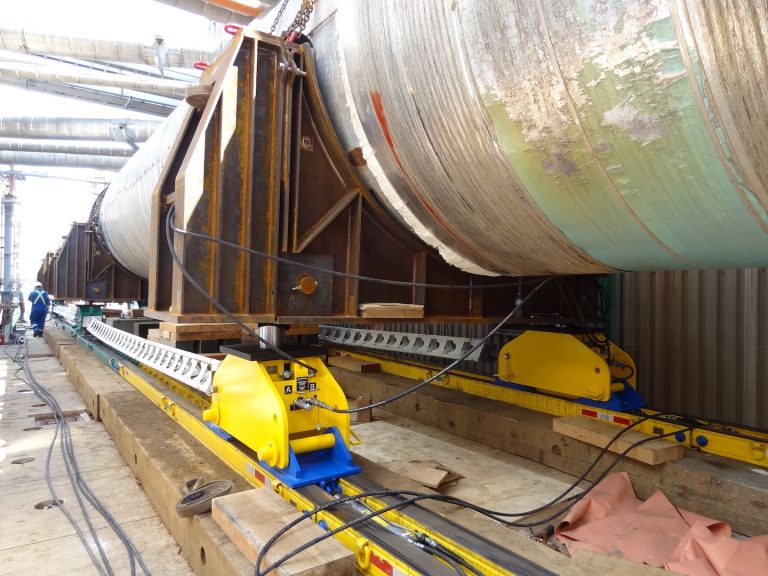Canadian hydraulic skidding equipment manufacturer Hydra-Slide, represented in the UK and Europe by international partner Rapid Response Solutions (RRS), has received an award from equipment rental company A-Plant, which staged a week of innovation earlier this summer, including a series of workshops and discussions for supply chain partners. Representatives from A-Plant’s 16 specialist divisions joined leading plant, tool, and equipment suppliers for the five-day event, with manufacturers invited to present their latest innovative products, services, and software. Throughout the week almost 40 suppliers were invited to showcase their new kit to a panel of A-Plant colleagues, supply chain partners, and major customers. Only five companies were awarded, included Hydra-Slide / RRS. Janine Smith, vice president at Hydra-Slide, said: “It is truly an honour to be recognised by the industry we aim to serve—and it was unexpected, which makes it even better. We are thrilled to accept this award and will do our absolute best to merit the recognition.” Paul Barber, managing director at RRS, said that raising the profile of Hydra-Slide equipment is crucial to increasing usage. He explained: “Through exhibiting at trade shows such as LiftEx and Breakbulk Europe we are starting to get the range of available equipment known. The products sell themselves once the customer is introduced to them. We are close to concluding some big sales in the UK and next year looks even better. Having the backing and support of a hire company like A-Plant can only help.” Smith concurs: “Because there are so many industries that would benefit from skidding systems and related rigging equipment, raising market awareness remains a top priority.” RRS supports A-Plant by supplying Hydra-Slide products for its hire fleet – a more desirable approach for A Plant than acquiring its own inventory. “A-Plant wants to offer a complete service to customers and part of that involves knowing how and where to access specialist services. I have on several occasions attended customer meetings to offer such product knowledge and potential solutions” he added. Jacking load shoes The winning entry centred on the 250-ton capacity JLS250 jacking load shoes, a complementary product to the Hydra-Slide HT300 and HT500 Heavy Track skidding systems. Each shoe includes a 250-ton capacity double-acting lift cylinder that can be connected hydraulically with any number of other shoes increasing the overall system capacity while maintaining equal load support and weight distribution. As the judging panel heard, using four shoes will increase the HT500 system capacity to 1,000 tons (900 tonnes); using eight shoes will give the system a load capacity of 2,000 tons (1,800 tonnes). This is accomplished while maintaining a low working height; the safety of the high friction coefficient of the system; as well as the added advantage of compensation for poor or uneven ground support through a three-point suspension hydraulic connection between the shoes. Janine Smith pointed to further applications of the jacking load shoes, not only for moving large transformers, vessels and reactors but also great potential in the Tunnel Boring sector. She added: “Our goal is to be able to outfit an entire rigging department with all the equipment they need to complete a slide project, including custom-built components when a unique challenge arises. Our product development is powered by client feedback and new challenges. We see a trend towards implementing the most compact, efficient and versatile equipment possible.” Dave Harris, business development director at A-Plant said: “Not only is innovation essential to ensure we have a steady stream of new products or services to bring into to the UK rental market, but also to allow us to contribute to some of society’s bigger challenges relating to safety, sustainability, and productivity. All of the companies awarded have presented truly innovative products.” www.hydra-slide.com






